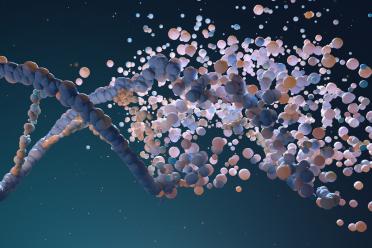
The impact of the research is recognised in an editorial in Yeast. Alongside two papers from other groups, the editorial states the collected body of recent work “contribute[s] a giant step for further comparative genomics research on Schizosaccharomyces”.
Schizosaccharomyces is a genus of fission yeast with six currently-recognised species. As part of a composite model system with S. pombe, S. japonicus has provided critical insights into the workings and evolution of cell biological mechanisms. And, with its divergent biology, it is a valuable model organism in its own right.
It was believed that S. japonicus had two varieties - S. japonicus var. japonicus, and S. japonicus var. versatilis. Existing genome assemblies, however, contained gaps and had been unable to resolve centromeres and other repeat-rich chromosomal regions.
To address these issues, researchers at the Earlham Institute and Francis Crick Institute set about generating a high-quality, annotated assembly of var. japonicus.
A first for this species, their telomere-to-telomere assembly increases the total S. japonicus genome assembly size to somewhere between 16.6 Mb and 18.1 Mb. From the assembly, they identified a previously unknown second centromere-like region on Chromosome 2.
The group also assembled and annotated the genome of var. versatilis. Based on phylogenetic analyses, the team suggest S. japonicus var. versitalis split from the S. japonicus lineage 25 million years ago.
They showed experimentally var. versatilis does not generate viable progeny with the reference strain of S. japonicus. And, in another first, they were able to show S. versatilis has a reciprocal translocation between chromosomes 1 and 2.
Dr Graham Etherington, a Senior Computational Biologist at the Earlham Institute and author on the papers, said: “Our assemblies reveal a wealth of new features, as well as an overall genome size at least 30 per cent larger than previous estimates.
“This end-to-end assembly fills in a number of gaps and provides strong evidence for a reclassification of S. japonicus var. versatilis as an entirely distinct species - S. versatilis.”
The two papers offer new insights about how this single-genus group of yeasts evolved, and how they might be able to adapt to different niches and diversify.
“The quality of the assembly could transform the use of S. japonicus and S. versatilis as model organisms,” said Dr Etherington.
“Understanding the phylogenetic relationship between the two species - alongside the availability of high-quality genome assemblies for both species - will be critical for mechanistic evolutionary cell biology studies using fission yeasts.”
Additionally, the researchers believe the availability of telomere-to-telomere assemblies will provide further clarity of centromeric, telomeric, and repeat structure.
‘Schizosaccharomyces versatilis represents a distinct evolutionary lineage of fission yeast’ and ‘Telomere-to-telomere Schizosaccharomyces japonicus genome assembly reveals hitherto unknown genome features’ are both published in the journal Yeast.

